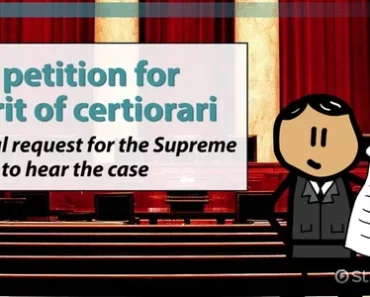Writing a petition may seem like a daunting task, but with the right approach, it can be an effective tool for creating change. Whether you’re aiming to influence government policies or raise awareness about a cause, a well-crafted petition can rally support and make a compelling case for action. In this comprehensive guide, we’ll walk you through the process of writing a persuasive petition, from identifying your target to promoting your cause effectively.
1. Identifying Your Target
The first step in writing a petition is to identify your target audience or entity. This could be a government body, a political party, an educational institution, a sports organization, or even a media outlet. Take some time to research which target is most relevant to your cause and has the power to address the issue at hand. Platforms like GoPetition offer numerous examples of successful petitions written to various targets, which can serve as inspiration for your own campaign.
2. Proper Research
Before you begin writing your petition, it’s crucial to conduct thorough research on your topic. Familiarize yourself with the background and context of the issue you’re addressing. Collect relevant facts, statistics, and documentation that support your cause. Your petition should provide a well-reasoned argument backed by evidence. By presenting a compelling case, you increase the likelihood of gaining support for your cause.
3. Clear and Concise Communication
Effective communication is key to writing a persuasive petition. Your petition should have a clear structure that guides readers through your argument. Start with a well-crafted preamble that provides background information and sets the stage for your request. Follow this with the core petition text, which should state your request concisely and logically. Avoid cluttering your petition with unnecessary information or requests that distract from the main message.
4. Privacy Considerations
Privacy is a valid concern when it comes to collecting data for e-petitions. At GoPetition, signers’ personal details are not used for unsolicited emails or sold to third parties. The platform maintains a strict privacy policy, ensuring that e-signatures are used for legitimate purposes. Assure your signers that their privacy will be respected, and be transparent about how their data will be used.
5. How to Promote Your Petition
Promoting your petition is crucial for its success. Utilize various channels to spread the word, such as social media, email campaigns, and grassroots efforts. Use platforms like GoPetition to reach a wider audience and gain visibility for your cause. Collaborate with like-minded individuals and organizations who can amplify your message. Remember that effective promotion can significantly impact the outcome of your campaign.
6. The Power of Petitions
Petitions have a long history of influencing public policy and shaping public opinion. They serve as a powerful tool for individuals and communities to voice their concerns and push for change. A well-documented and supported petition can have persuasive influence, even if it doesn’t strictly comply with parliamentary rules. Petitions can complement other campaign strategies, such as direct lobbying, letter writing, and media exposure.
7. Creating an Effective Structure
A well-structured petition is crucial for capturing readers’ attention and conveying your message effectively. Start with a clear title that succinctly summarizes your cause. Follow this with a compelling introduction that grabs the reader’s interest and provides a brief overview of the issue. Divide your petition into sections or paragraphs that address different aspects of your argument, making it easy for readers to navigate and understand your points.
8. Crafting an Impactful Preamble
The preamble of your petition sets the stage for the core petition text. It should provide relevant background information, including the reasons for your request. Use this section to establish the urgency and importance of your cause. Include links to supporting documentation or facts that strengthen your argument. A well-crafted preamble can engage readers and motivate them to support your petition.
9. Writing the Core Petition Text
The core petition text is the heart of your petition, where you state your request or call to action. Be concise and clear in your language, ensuring that the request is easily understood. Use logical reasoning and persuasive language to make a compelling case. Consider including bullet points or subheadings to break up the text and make it more accessible. Proofread your petition carefully to eliminate any errors or inconsistencies.
10. Examples of Successful Petitions
Drawing inspiration from successful petitions can help you craft an impactful one of your own. Platforms like GoPetition host numerous examples of well-written petitions to various levels of government, parliaments, and other organizations. Explore these examples to understand how petitions have been effective in driving change. Adapt their strategies and language to fit your own cause while maintaining originality.
11. The Status of E-Signatures
The acceptance of e-signatures is evolving in many jurisdictions. The law surrounding electronic signatures is still developing, so it’s essential to stay informed about the latest trends and requirements. Platforms like GoPetition provide custom software that allows you to collect the necessary data fields and ensure compliance with regulations. Flexibility in collecting e-signatures will help you reach a broader audience and make your petition more accessible.
12. Resources and Support
Writing a petition can be a complex task, but you don’t have to do it alone. Platforms like GoPetition offer resources and support to help you throughout the process. From petition templates to customer service, these platforms are dedicated to ensuring your success. Take advantage of these tools to create a persuasive and impactful petition that can drive change.
In conclusion, writing a petition requires careful planning, thorough research, and persuasive communication. By identifying your target, conducting proper research, and crafting a well-structured petition, you can increase your chances of success. Remember to promote your petition effectively and draw inspiration from successful examples. With the power of petitions, you can raise awareness, influence public opinion, and create meaningful change.





